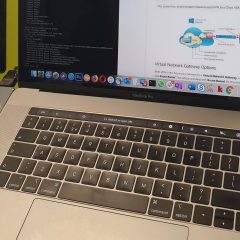Windows Server – Change Your Password in an RDP Session (Send Ctrl+Alt+Del)
KB ID 0001183 Problem Colleague: Windows Server, Where’s Windows Security gone? Me: Eh? Colleague: Windows Security! Me: What are you trying to do? Colleague: I want to change my password and I can’t send a Ctrl+Alt+Delete to the remote server. Well I know that pressing Crtl+Alt+Delete would let you change your password like so; I wasn’t aware that in Server 2008 and earlier if you were connected via RDP you got a...
Remote Connect to macOS
KB ID 0001539 Problem Remotely connecting to Windows is easy we’ve had RDP since Windows NT4, (yes I’m that old). But what if you want to remote connect to a mac? Well that has ‘Screen Sharing’ built in, (which it pretty much the same, but it uses VNC). If you’re unfamiliar with VNC, (Virtual Network Computing,) you can install it on both Windows and Linux. Normally you need a client, (to connect with)...
Migrating RD Web and RD Gateway Roles
KB ID 0001406 Problem I’ve got a job coming up to deploy some Duo two factor authentication into a clients RDS farm. To make things a bit easier for them I needed to migrate their RD Connection Broker. They had their Connection Broker, Gateway, and Web roles on one server, (which is not unusual, or incorrect). It turned out, that moving the Connection Broker, was going to be a major task, and it would be a lot easier to move the...
RDS – Custom Start Menu (Remove Administrative Tools)
KB ID 0001207 Problem Why is it so difficult to remove Administrative tools! The one folder you might not want your users having access to is on everyones start menu by default? I’ve seen posts saying to change the permissions so users can’t run the snap-in’s in that folder, and other posts that suggest removing it from the ‘all users’ profile, and yet more posts that say remove it in preferences with a...
Publishing Remote Desktop Services With Web Application Gateway
KB ID 0001143 Problem Getting this article to completion has been a bit of a journey! This is the final post that will stitch together all the others I’ve posted over the last couple of weeks, that will enable you to publish your RemoteApps with ‘Remote Desktop Web Access’, and have that service presented securely from your DMZ. I’ll be using Active Directory Federation Services, (you don’t have to, but...





